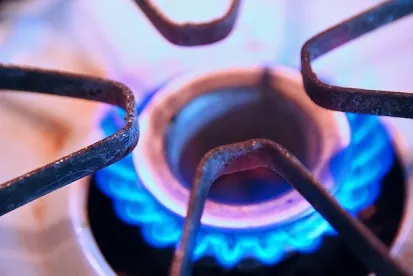The Energy Information Administration (EIA) recently released a study of the impacts of increasing the amount of Liquefied Natural Gas (LNG) exported from the lower 48 states. According to the study, increasing LNG exports by 2 billion cubic feet per day (Bcf/d) each year beginning in 2015 to levels between 12 and 20 Bcf/d would increase natural gas producer prices 4% to 11% over the 2015-2040 period. Consumer bills for natural gas would rise 1% to 8% and for electricity as much as 3%.
However, the higher gas prices would result in increased domestic investment, especially in the industries that supply inputs to the gas sector, and in higher levels of domestic consumption expenditures, resulting in GDP increases of 0.05% to 0.2%. The study finds that this higher economic output is enough to overcome the negative impact of higher domestic energy prices. According to Kyle Isakower of the American Petroleum Institute, “the updated study confirms what past research has found, which is that higher levels of exports prompt more U.S. growth and increase investment in American energy security.”
The study also found that the higher level of exports, compared to a base case level, would increase CO2 emissions up to 0.6% as more natural gas is used to fuel added liquefaction and fuel switching occurs in the electric power sector.
The study was requested by DOE’s Office of Fossil Energy, which, under Section 3 of the Natural Gas Act, must grant a permit to export domestically-produced natural gas unless it finds that such action is not consistent with the public interest. Exports to nations with which the U.S. has a Free Trade Agreement are presumed to be in the public interest, but DOE must evaluate whether exports to non-FTA nations are consistent with the public interest. The updated study will be considered in the public interest evaluation of applications to export LNG to non-FTA nations.
EIA’s study is an update to a similar 2012 study of the impacts of LNG exports of 6-12 Bcf/d. That study concluded that the U.S. would experience net economic benefits from those levels of exports. More than 10 Bcf/d of non-FTA exports have been approved already, according to a post on the University of Texas law school’s Energy Center blog.
The results of the study must be viewed with some perspective. The study recognizes that the pace of increase in exports in the analysis is “extremely aggressive, indeed almost impossible,” and was intended to show an “outer envelope of domestic production and consumption responses” that might follow from exports beyond 12 Bcf/d. Erica Bowman of America’s Natural Gas Alliance noted that EIA’s base case shows LNG exports of less than 10 Bcf/d by 2040, compared to the 12-20Bcf/d in the study, and that “under any but the most implausible scenarios, prices remain stable at levels below $6.00 a million British thermal units through 2030.”




 />i
/>i
